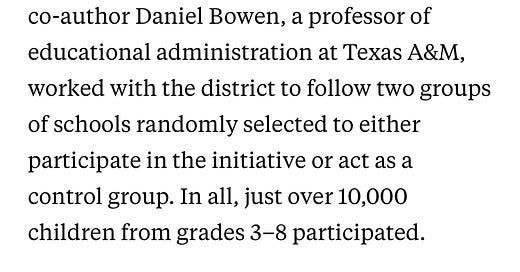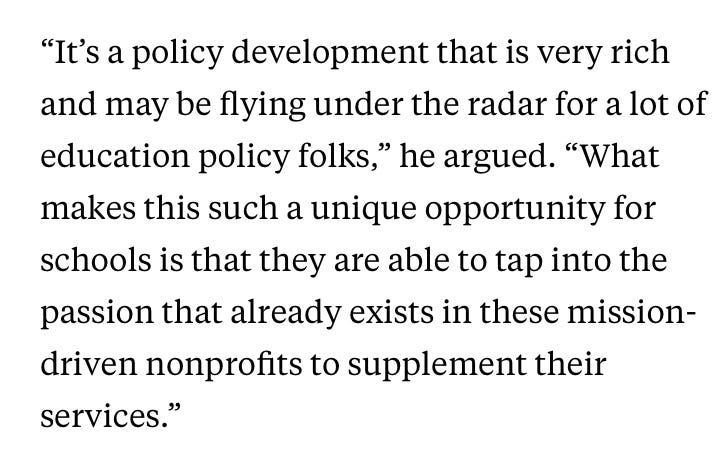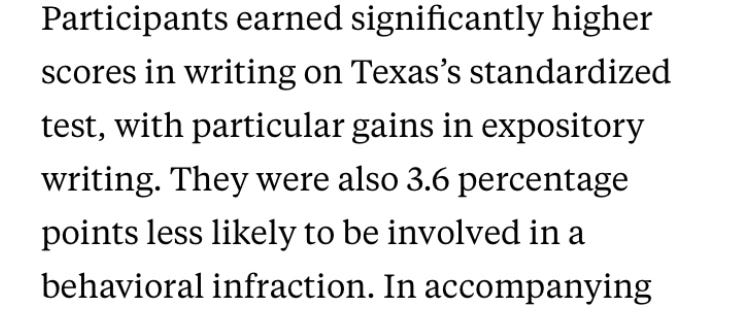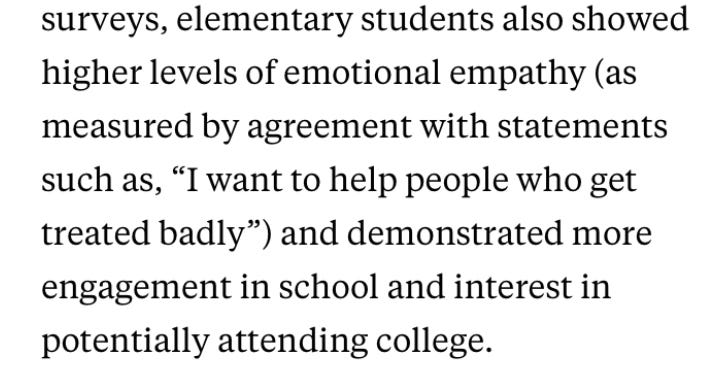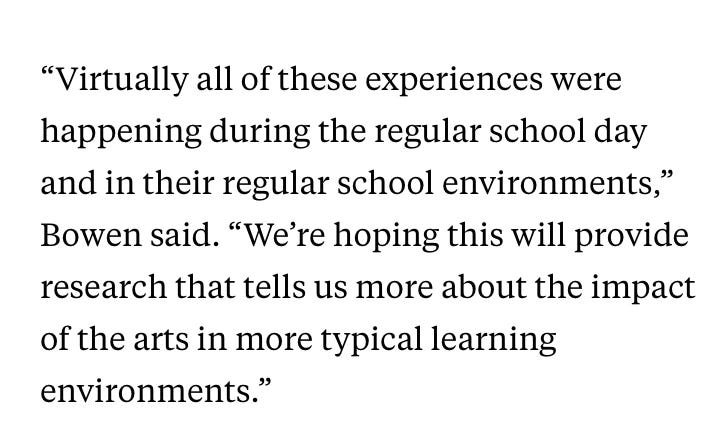Increasing Test Scores on Expository Writing Exams through Art Education
A while back during pre-Covid times, a local high school in a ritzy white neighborhood organized a special concert featuring both its chorus and its band as a fundraiser to contribute to the music program at another high school across town in a poor neighborhood serving working-class and minority families.
The band directors at the two schools were old college friends; one of them directed the band in a school with a music program on the chopping block. Parents from both schools got together out of respect for the power of art to engage young people and made a plan to sustain band in the regular curriculum on par with English and math at least for another year.
This anecdote underscores what most of us know from personal observation and experience: Engagement with art in school as spectators or performers builds community and satisfies a strong human need. A school ethos validating the worth of aesthetic experience and expression helps keep young people coming to school.
*
A report on a recent experimental study of the effects of arts education in Houston, Texas, discusses empirical evidence of wide ranging positive effects on student learning from access to art education.1 Houston’s Arts Access Initiative, a project involving a number of philanthropies and local organizations, started by auditing the Houston Independent School District and found about 1 out of 3 of the city’s 209 elementary and middle schools offered no full-time arts specialist nor arts programming outside of school hours. Witness:
At first glance, the random selection of children to exclude from resources simply to test the effects of exposure to art education might seem troublesome. The resources might have been allocated equally among all or based on greatest need. But the opportunity to collect evidence from a “strong dose” with the potential to inform policy debates over resource allocation outweighed other options. Now the evidence must be publicized. Witness:
*
What were the direct measurable effects of the experiment? One of the most surprising perhaps was the difference in direct measures of writing achievement (I can’t speak to the validity of the Texas standardized test and need to know more) and an uptick in citizenship:
Indirect measurements revealed evidence of changes in academic motivation and empathy, reaffirming the power of art to humanize:
Importantly, student participation in arts education occurred without leaving campus:
*
If I were involved in designing this study, I might have looked at reading assessment data as well, though again, my conclusion would be provisional depending on qualities of the test. I would also have included an open-ended pre- and post-exposure ethnographic or phenomenological component exploring the experiences of teachers, students, and parents.
But from a policy perspective, these additions would not be crucial. The findings are important for literacy educators, especially in elementary and middle schools, to ponder.
https://www.the74million.org/article/arts-education-program-increases-school-engagement-study-finds/
